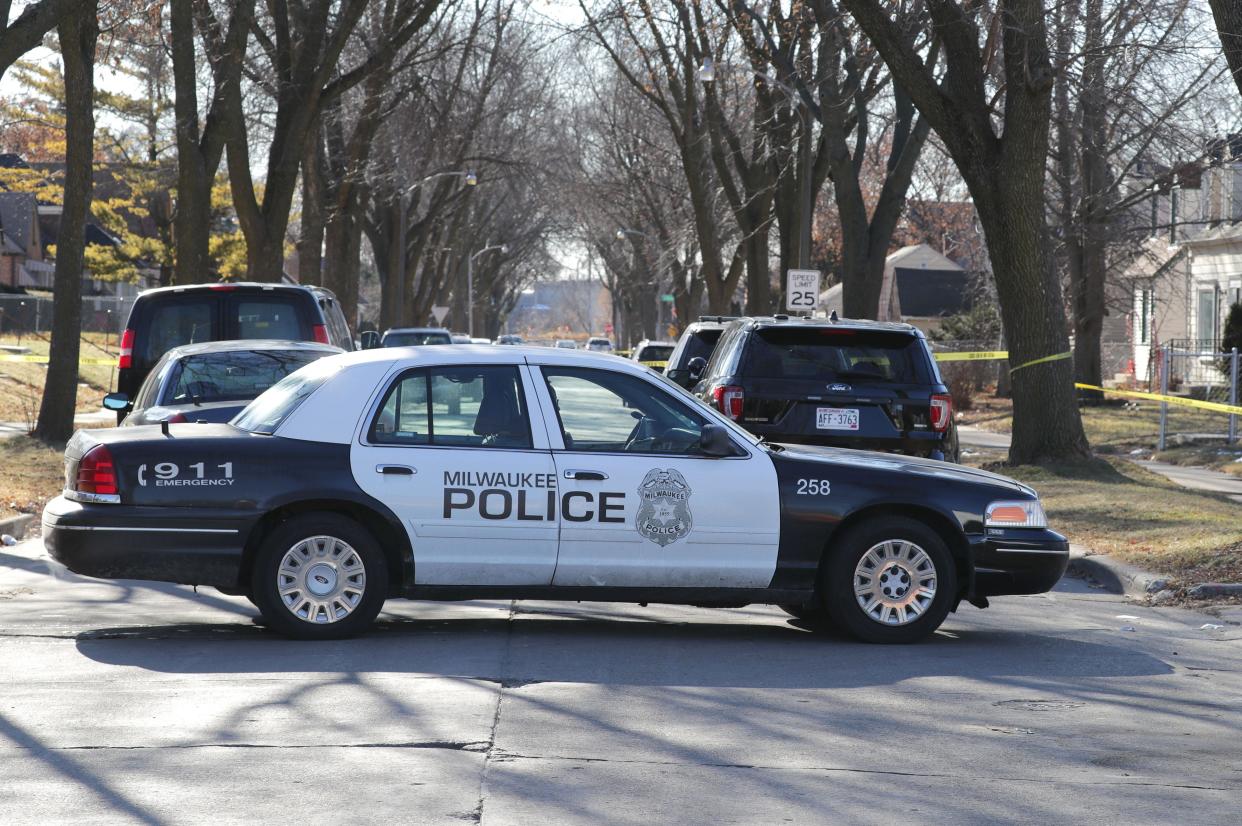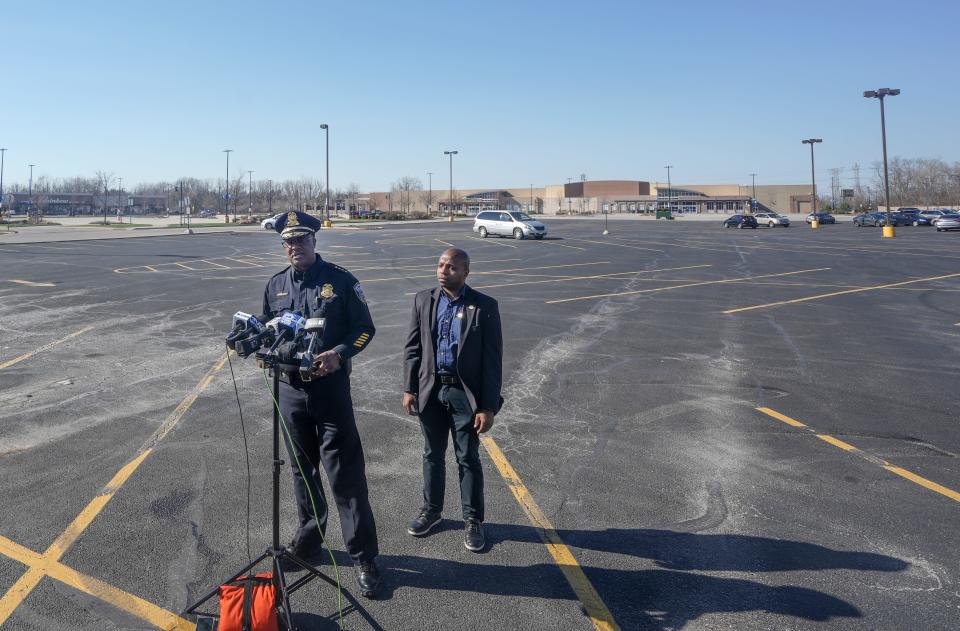How law enforcement is trying to prevent disruptive crowds from forming this summer

Every year around this time, a familiar dynamic unfolds: a crowd of young people gathers in a public space and law enforcement worries things will get rowdy.
Although the crowds don’t form with the purpose of causing disturbances, the concerns are not unwarranted. Incidents this year and years past have led to fights, shootings and reckless driving – in parks, parking lots or in high-profile areas like Milwaukee’s lakefront.
Those types of incidents have unfolded several times already in Milwaukee as warmer temperatures begin to kick in – prompting a press conference from the mayor and police chief in mid-April.
Three things to know about the incidents and what public officials are doing about them:
Gatherings have potential to become dangerous
Law enforcement officials have described the gatherings as something organized on social media.
Milwaukee Office of Violence Prevention Director Ashanti Hamilton said his team is gathering information about the incidents that seem to be part of a trend here and elsewhere. They want to better understand who is participating, what the threats are, where threats are originating and what the office can do to mitigate them.
By and large, he said, most of the participants in Milwaukee “have not been focused on violence and mayhem, at least initially.”
He said the gatherings in part seem to start as celebrations but often as they grow they attract people who end up using them to gain attention on social media “to do some very violent things.”
“We’re trying to encourage folks that if they are gathering, keep it festive and keep it fun – and for them to recognize that, you know, some people who are participating are using it for the wrong reasons,” Hamilton said.
In a three-week period last spring, 40 illegally possessed guns were confiscated by the Milwaukee County Sheriff’s Office from similar gatherings on the lakefront, Insp. Brian Barkow said.
Ald. Lamont Westmoreland said he thought most of those attending the gatherings are out to have fun and not cause problems. But, he said, in such uncontrolled situations something as simple as a fender bender could escalate into serious violence.
“When you have that amount of people – it was like 250 to 300 in an uncontrolled environment – I don’t care what anybody says, anything could happen,” he said.
Law enforcement get heads up from social media

In interviews with the Journal Sentinel, officials from the Milwaukee Police Department and Milwaukee County Sheriff’s Office described five incidents in recent weeks where crowds formed at two parking areas on the city’s north and northwest sides and after park hours on the lakefront and another county-run park.
Each attracted anywhere from 20 to 300 people. They included reckless driving, fights or gunshots. Law enforcement reported writing dozens of citations and a total of around a half-dozen arrests. One sheriff’s deputy was punched by a teenager.
But Police Insp. David Feldmeier said neither incident got “too out of hand.” He said close monitoring of social media gave police advance warning of the two parking lot congregations, allowing police to establish a presence as cars arrived.
“People got the message that maybe this isn’t the place they want to be,” he said.
That kind of intelligence is shared with the sheriff’s office, which patrols parks and lakefront, and other area police agencies when gatherings occur outside Milwaukee, Feldmeier said.
Barkow, the sheriff’s office inspector, said a partnership with police and the Wisconsin State Patrol will add more traffic enforcement along the lakefront. He said squad cars in general will have an increased presence in the warmer months.
Ald. Robert Bauman, whose district includes much of the lakefront, said authorities must prevent the gatherings from taking place. He floated the idea that Milwaukee County consider shutting down Lincoln Memorial Drive when social media indicates a gathering is likely to happen at the lakefront.
“Once they reach critical mass of numbers, it’s very hard to unravel without the police becoming aggressive, and then they will be criticized for that,” he said.
One of the incidents earlier this month involved crowd’s forming outside of a parking for a former Walmart location. Westmoreland called for shrinking access to the area by putting up concrete barriers, and Feldmeier said property owners agreed to do just that after being contacted by police.
Similar incidents seen outside Milwaukee
The phenomenon is not unique to Milwaukee. Similar gatherings in southern California and Chicago have also made headlines.
Chicago Mayor-elect Brandon Johnson connected the events to a lack of opportunities for young people in marginalized communities.
Terron Edwards, the founder of the nonprofit Fathers Making Progress, said those same dynamics apply to young people in Milwaukee.
He said many kids in the city may be struggling with “a disconnection to purpose” because their families may not be positioned well to give them direction. For a teenager who may be “floating in the wind” to see a social media post about a large-scale gathering, they might think , “what’s wrong with a little adventure? We have nothing else to do,” Edwards said.
“They don’t have a tether,” he said. “They don’t have a reason to not be there.”
Milwaukee County Executive David Crowley said it is imperative that people breaking the law are held accountable, but he agreed with the sentiment raised by Johnson, that too many young people don’t have access to opportunities, and a lot of the loitering behavior comes from a lack of access to recreational activities.
“How do we allow young people to be a part of the decision-making process?” he said.
Crowley said there needs to be more engaging of young people in the school system and nonprofits, adding “we need to invest in programming for our young people.”
Following the COVID-19 pandemic, Crowley said “people are just trying to find ways to enjoy themselves, whether that is legally or illegally.”
Crowley argued many of the young people gathered have already been labeled with certain negative labels and are demonized as a result. Some take ownership of it and act accordingly, while some break away from it, he said.
“When you place a title on any person, they have the opportunity … to work to remove this title, this perception of them, or they either double-down on that perception,” Crowley said.
“I think as long as we continue to demonize our young people … I think it’s extremely important that we do everything that we can to be sure that they don’t own that title, especially if it’s a negative title.”
Contact Elliot Hughes at elliot.hughes@jrn.com or 414-704-8958. Follow him on Twitter @elliothughes12.
This article originally appeared on Milwaukee Journal Sentinel: How Milwaukee authorities plan to prevent disruptive crowds in parks

